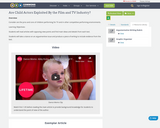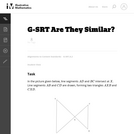
Ardea alba: Information
- Subject:
- Life Science
- Zoology
- Material Type:
- Reading
- Provider:
- University of Michigan Museum of Zoology
- Provider Set:
- Animal Diversity Web
- Author:
- Jessica Jones (author), Western Maryland College
- Date Added:
- 03/07/2005

Ardea alba: Information

Ardea herodias: Information

Ardmara Concert is a multi-party, multi-issue negotiation between a concert promoter, representative of the Residents' Association, representative of the Parents' Association, local TD (politician) and representative of the Business Association over the staging of a concert by a controversial performer. Ardmara Concert is designed for third level students studying negotiation and may be used to introduce students to multi-party negotiation. It also serves as an example of a values-based dispute, in which parties have ethical concerns regarding the impact of the concert.

Test

Students and other people who are interested in applying to microcontrollers for testing working process of automatic system or people who are fascinated in learning and examining the microcontrollers in new approaches such as using an autonomous robot as a form of an interactive media.In this module, students will develop their ability to build simple robots using arduino ATX2 microcontroller and programming the robot to move using arduino 1.7.x .

In this video we show you how to connect Bit-zee's Arduino micro-controller to his frame. Created by Karl Wendt.

Consider are the pros and cons of children performing for TV and in other competitive performing environments. Learning Objectives:Students will read articles with opposing view points and find main ideas and details from each text.Students will take a stance on an arguementive issue and produce a piece of writing to include evidence from the text.

Consider are the pros and cons of children performing for TV and in other competitive performing environments.

Students learn that dams do not last forever. Similar to other human-made structures, such as roads and bridges, dams require regular maintenance and have a finite lifespan. Many dams built during the 1930-70s, an era of intensive dam construction, have an expected life of 50-100 years. Due to inadequate maintenance and/or for environmental reasons, some of these dams will fail or be removed in the next 50 years. The engineers with Splash Engineering have an ethical obligation to remind Thirsty County of the maintenance and lifespan concerns associated with its dam.

In this short video, host Dr. Ryan interviews graduate student Amy Steiker at the Institute of Arctic and Alpine Research about her research, using isotopes of nitrous oxide, connecting human activity to greenhouse gas emissions.

This example Socratic questioning page provides an outline for leading a classroom discussion regarding whether or not nanobacteria exist. Sample questions, resources for background information, and tips and assessment information are provided.

In this lesson, students investigate whether other parts of the world are changing and getting hotter just like Colorado.

Recent research in psychology has highlighted a number of replication problems in the discipline, with publication bias – the preference for publishing original and positive results, and a resistance to publishing negative results and replications- identified as one reason for replication failure. However, little empirical research exists to demonstrate that journals explicitly refuse to publish replications. We reviewed the instructions to authors and the published aims of 1151 psychology journals and examined whether they indicated that replications were permitted and accepted. We also examined whether journal practices differed across branches of the discipline, and whether editorial practices differed between low and high impact journals. Thirty three journals (3%) stated in their aims or instructions to authors that they accepted replications. There was no difference between high and low impact journals. The implications of these findings for psychology are discussed.

This learning video deals with a question of geometrical probability. A key idea presented is the fact that a linear equation in three dimensions produces a plane. The video focuses on random triangles that are defined by their three respective angles. These angles are chosen randomly subject to a constraint that they must sum to 180 degrees. An example of the types of in-class activities for between segments of the video is: Ask six students for numbers and make those numbers the coordinates x,y of three points. Then have the class try to figure out how to decide if the triangle with those corners is acute or obtuse.

This resource is a video abstract of a research paper created by Research Square on behalf of its authors. It provides a synopsis that's easy to understand, and can be used to introduce the topics it covers to students, researchers, and the general public. The video's transcript is also provided in full, with a portion provided below for preview:
"The TAM subfamily of receptor kinases has been implicated in tumor development and progression. Their roles in efferocytosis, regulation of immune cells, secretion of inflammatory factors, and epithelial-to-mesenchymal transition make them key players in tumor development and progression. But TAM signaling is not always beneficial to tumor growth. In glioblastoma (GBM), the most prevalent and lethal primary brain tumor in adults it appears that TAM receptors may also have anti-tumor effects. While upregulation of TAM signaling is usually associated with GBM development, progression, and poor prognosis, TAM receptors may also activate pathways that trigger anti-tumor immune responses and their immunosuppressive role in the tumor microenvironment may obstruct GBM progression..."
The rest of the transcript, along with a link to the research itself, is available on the resource itself.

In this problem, students are given a picture of two triangles that appear to be similar, but whose similarity cannot be proven without further information. Asking students to provide a sequence of similarity transformations that maps one triangle to the other focuses them on the work of standard G-SRT.2, using the definition of similarity in terms of similarity transformations.

This OER is a PowerPoint presentasion to discuss Chapter 9, Are Things as They Appear?, in the textbook Norton Intro to Philosophy and Appearance and Reality, by Bertrand Russel. It is my interpretaion of the content from a college student's view. In the PowerPoint, I have added some discussion questions and additional resources to further the learning of the students.

This example Socratic questioning page provides an outline for leading a classroom discussion regarding whether or not viruses are alive. Sample questions, resources for background information, and tips and assessment information are provided.

This video segment adapted from NOVA features a variety of scientific perspectives on the age old question, "Are we alone in the universe?" Animations make vivid the improbability that we could intercept a radio wave signaling extra terrestrial intelligence.

The year is 2032 and your class has successfully achieved a manned mission to Mars! After several explorations of the Red Planet, one question is still being debated: "Is there life on Mars?" The class is challenged with the task of establishing criteria to help look for signs of life. Student explorers conduct a scientific experiment in which they evaluate three "Martian" soil samples and determine if any contain life.